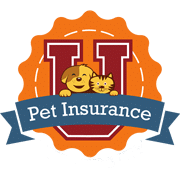10 Hidden Hazards for Indoor Cats
Free Pet Insurance Comparison
Compare Quotes From Top Companies and Save
Secured with SHA-256 Encryption

Dr. Pippa Elliott BVMS, MRCVS
Veterinarian
Dr Pippa Elliott BVMS, MRCVS is a veterinarian with over 30 years of experience in companion animal practice. In 1987 she graduated from the University of Glasgow, with a degree in veterinary medicine and surgery. She works at Blythwood Vets and the People’s Dispensary for Sick Animals (PDSA). Pippa is an advocate of Fear-Free Practice, an animal addict, and a veterinary writer. She is also w...
Veterinarian
UPDATED: Feb 3, 2025
Pet Insurance U receives compensation from the third parties included on this site. This includes payment for clicks from our site to insurance providers’ sites and quote requests generated. Our rankings and reviews are not affected by payments from the insurance companies. The compensation we receive allows the site to be free and regularly updated. Our goal is to review every pet insurance provider, but not all companies are listed on the site.
And many of the companies we review do not pay us anything. We simply rate, compare and review their plan because we feel it will be valuable to you. Our reviews are guaranteed to be unbiased, professional and advertising compensation does not influence rankings.
We are a free online resource for anyone interested in learning more about pet insurance. Our goal is to be an objective, third-party resource for everything pet insurance related. We update our site regularly, and all content is reviewed by pet insurance experts.
UPDATED: Feb 3, 2025
Pet Insurance U receives compensation from the third parties included on this site. This includes payment for clicks from our site to insurance providers’ sites and quote requests generated. Our rankings and reviews are not affected by payments from the insurance companies. The compensation we receive allows the site to be free and regularly updated. Our goal is to review every pet insurance provider, but not all companies are listed on the site.
And many of the companies we review do not pay us anything. We simply rate, compare and review their plan because we feel it will be valuable to you. Our reviews are guaranteed to be unbiased, professional and advertising compensation does not influence rankings.
On This Page
You want your cat to have a long, happy life, so you follow the ASPCA‘s advice and keep your beloved cat inside.
But just because your cat is safe from outdoor dangers doesn’t mean she’s safe from all dangers.
Hazards lurk on both sides of the door. The indoor hazards are simply a bit less obvious than those encountered by your cat’s free-roaming cousins.
To keep your kitty safe, look out for these 10 Hidden Hazards for Indoor Cats.
Table of Contents:
#1: Household Chemicals
Many common cleaning products contain substances hazardous to cats, such as floor cleaners that use benzalkonium chloride. If kitty strolls across your freshly washed floor and then licks her paws, the benzalkonium could cause acid burns on her tongue.
Keep all household chemicals safely away from your cat, and don’t let her walk on wet surfaces.
Read more: Pet Insurance for Indoor/Outdoor Cats
Need Pet Insurance?
FACT: Pet insurance pays up to 90% of vet bills when your pet is sick or injured!
Enter your ZIP code below to view companies that have cheap pet insurance rates.
Secured with SHA-256 Encryption
#2: House Plants
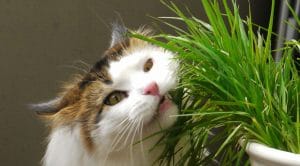
Cats have a natural desire to chew on grass and leaves. In the absence of grass, your houseplants will do, but not all plants are safe. Lilies can lead to catastrophic kidney failure, and several other plants are also toxic to cats.
Keep your cat away from these Poisonous Plants:
- Aloe Vera
- Asparagus fern
- Corn plants
- Cyclamen
- Dieffenbachia
- Philodendron
You can satisfy your cat’s urge to chew by giving it a tray of growing grass to munch on. You can also reduce the risk of poisoning by only buying cat-safe, non-poisonous plants for the inside of your home.
10 Safe (non-toxic) Plants for Cats:
- African violet
- Air plants
- Ferns (Maidenhair, Boston, Bird’s Nest)
- Orchids
- Peperomia
- Prayer Plant
- Spider Plant
- Succulents (Echeveria, Jade, Kalanchoe)
#3: Boredom
Indoor cats are prone to boredom, which can result in overeating.
Carrying too much weight Increases the Likelihood of:
- Diabetes mellitus
- Feline lower urinary tract disease, or FLUTD
Both disorders can put a substantial strain on your cat’s health – as well as your wallet. Make sure kitty stays occupied with plenty of cat-safe toys, scratching posts, and other playthings.
Related: 10 Things You Must Know Before You Buy Pet Insurance
#4: Laundry Appliances
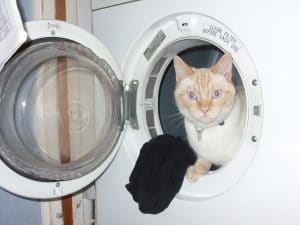
Cats are comfort-seekers that are attracted to warm places – like the inside of your dryer or the cozy nest of clothes in your washing machine. If your cat climbs in and you don’t spot her, she’s going to end up very dizzy, very unhappy and potentially injured.
Keep laundry appliance doors closed, and always check inside for an unexpected furry visitor before turning them on.
Enter your ZIP code below to view companies that have cheap pet insurance rates.
Secured with SHA-256 Encryption
#5: Falls
Cats love to climb, and they consistently look for any opportunity to do so. If that opportunity happens to be a balcony rail or out a window, they could be heading for a tumble that ends in broken bones – or worse.
Be sure to cat-proof your balcony and secure durable screens across all open windows.
Real Cost Savings from PetFirst Clients
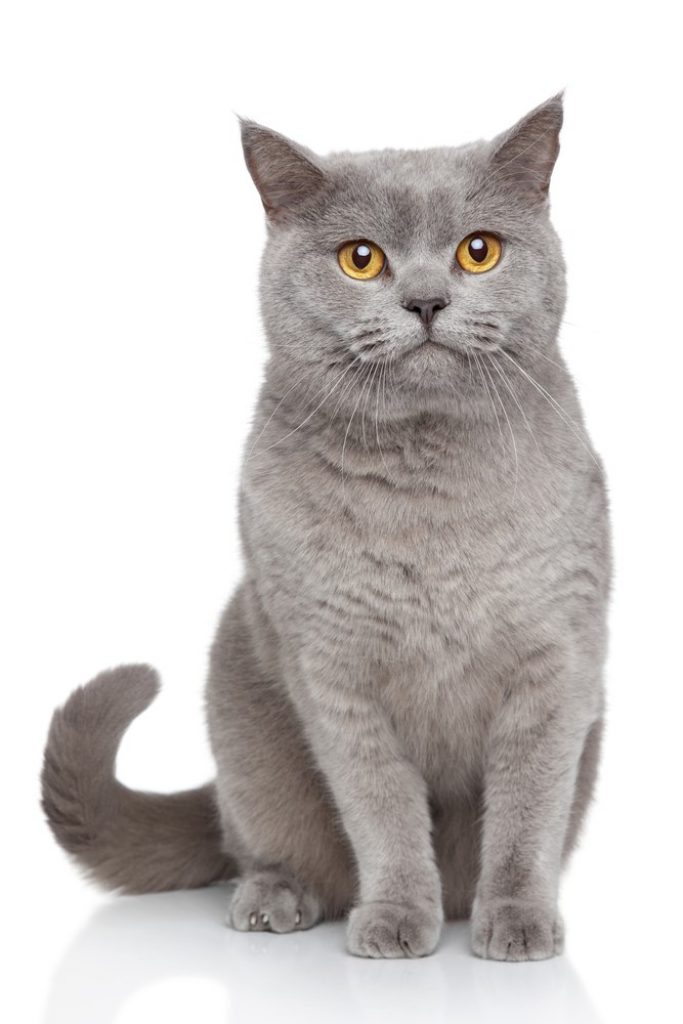
Gidget
PetFirst saved his parents
$2,194
Artemis was a beautiful and friendly cat to all who were willing to pet him. Unfortunately, he developed feline diabetes which required regular vet visits and medications that his Mother could not otherwise afford on her fixed income. Having PetFirst insurance, she called and discussed the problem with a friendly PetFirst agent. To her surprise, she found out that Artemis’ ongoing required vet visits and medication would be covered by his PetFirst insurance. Artemis was able to live out the rest of his life with proper medical care and medicines thanks to PetFirst insurance.
#6: Human Food
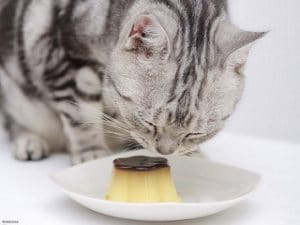
Not all human food is safe for cats, particularly those containing onions and garlic.
- Eating onions and garlic regularly can cause a feline’s red blood cells to break down.
- Chocolate can cause racing heart-rate and seizures.
- The artificial sweetener xylitol, which is found in certain candies, can make blood sugar levels plunge dangerously low.
- Other no-nos include caffeine, alcohol, milk, and raisins.
Check with your vet before feeding any human food to your cat. Better yet, stick with high-quality cat food.
#7: String and Other ‘Snakes’
Cats love to pounce when they spot a wriggly snake, and it doesn’t matter if the snake is a piece of string, thread, tinsel or ribbon. The danger here is if your cat decides to swallow the string, which can knot up in their intestines and lead to serious complications.
Be sure to keep any knitting and sewing supplies in a cat-proof basket, and supervise playtime if they want to chase “snakes.”
Enter your ZIP code below to view companies that have cheap pet insurance rates.
Secured with SHA-256 Encryption
#8: Toilets
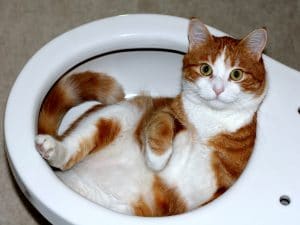
Keep the toilet lid down! While cats learn quickly and it will only happen once, it’s not uncommon for them to accidentally fall into the toilet bowl.
#9: Electrocution
Kittens or curious young adult cats are most at risk for electrocution, especially if they mistake an electrical cord for a snake! Biting through the cable can cause a severe electric shock and thermal burns to the mouth.
Pet-proof your house by tucking wiring behind furniture or securing it in ducting.
#10: Rehoming

One final risk is the danger indoor cats can pose to themselves. If they are bored or stressed, cats may be inclined to relieve themselves in inappropriate places or scratch up the furniture. A kitty that becomes a real nuisance runs to risk of being given away, as shelters all too frequently report.
Set aside regular playtimes with your cat, and provide a cat-friendly environment with options such as high cat towers with a street view. It’s also wise to invest in pet insurance because the unexpected does happen – even to indoor cats.
Other articles you may find helpful:
Is Exotic Pet Insurance Necessary?
The Best Pet Insurance By State
Fun Facts, Dog FAQ, And Unsolicited Dog Advice
5 Training Commands to Save Your Dog’s Life
The Ultimate Guide to Safe Foods for Dogs
We have worked hard to provide you with all the free resources possible to help give you insight into the best pet insurance for cats, additional cat breeds info, common cat health issues, and a fun look at frequently asked cat questions.
Other Frequently asked cat questions and some unsolicited catty advice…
Why your cat ignores you when you call it?
How to stop your cat from scratching the carpet?
Can you make a feral cat a pet?
Why does my cat pee outside the litter box?
Why do people walk their cats on a leash?
4 Ways to prepare for a new kitten
10 hidden hazards for indoor cats
Why changing your cat’s food is risky
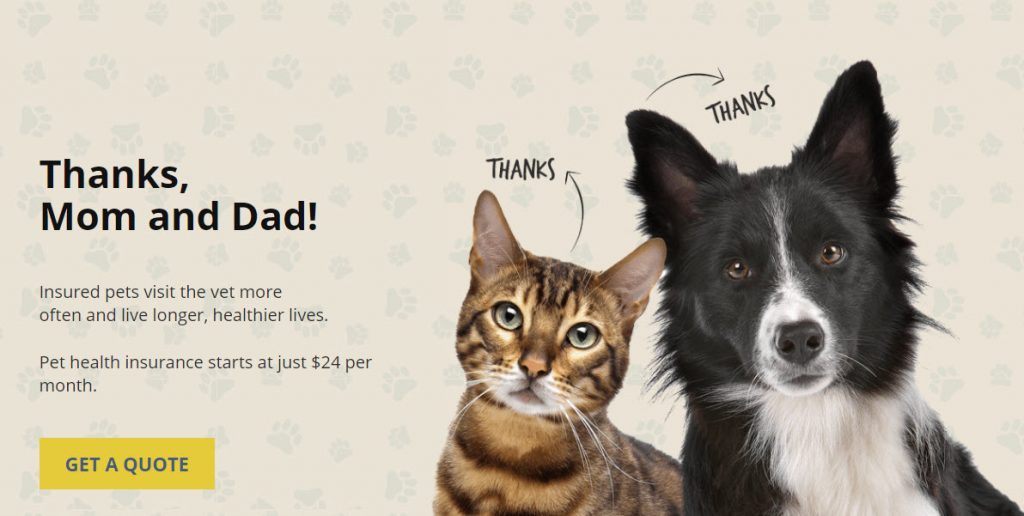
Frequently Asked Questions
Why is pet insurance important for cat owners?
Pet insurance is crucial for cat owners as it helps cover up to 90% of veterinary bills when their pet is sick or injured. It provides financial protection and ensures that the best possible care can be provided for the cat.
How do I find the best pet insurance for my cat?
You can compare quotes from top insurance companies to find the most suitable coverage for your cat. Enter your ZIP code to view companies with competitive rates and secure SHA-256 Encryption for data protection.
Who is Melanie Musson, the published insurance expert mentioned in the content?
Melanie Musson is a fourth-generation insurance professional with in-depth knowledge of state-specific car insurance laws. She specializes in understanding insurance dynamics and how it fits into individuals’ lives.
What are the 10 hidden hazards for indoor cats mentioned in the article?
The 10 hidden hazards for indoor cats are:
- Household Chemicals
- House Plants
- Boredom
- Laundry Appliances
- Falls
- Human Food
- String and Other ‘Snakes’
- Toilets
- Electrocution
- Rehoming
How can cat owners protect their cats from these hazards?
Owners can take preventive measures such as keeping household chemicals out of reach, selecting cat-safe plants, providing entertainment to avoid boredom, securing laundry appliances, cat-proofing balconies, avoiding harmful human foods, and ensuring electrical cords are inaccessible.
Why is boredom a concern for indoor cats, and how can it be addressed?
Indoor cats are prone to boredom, leading to overeating and potential health issues. Owners can address this by providing cat-safe toys, scratching posts, and a stimulating environment to keep their cats occupied.
Why is securing the home important for cat owners?
Securing the home is crucial to prevent accidents like falls, electrocution, and ingestion of harmful items. Cat-proofing balconies, keeping toilet lids down, and securing electrical cords are essential safety measures.
How can pet insurance help in unexpected situations for indoor cats?
Pet insurance provides financial support in unforeseen circumstances, such as accidents or health issues. It ensures that necessary veterinary care is accessible without a significant financial burden.
What is the goal of Pet Insurance U?
Pet Insurance U aims to be an objective, third-party resource for pet insurance information. They provide unbiased reviews, rankings, and valuable insights into pet insurance to help pet owners make informed decisions.
How can cat owners contribute to their cat’s well-being and prevent rehoming risks?
Cat owners can set aside regular playtimes, create a cat-friendly environment, and invest in pet insurance too.
Enter your ZIP code below to view companies that have cheap pet insurance rates.
Secured with SHA-256 Encryption
Dr. Pippa Elliott BVMS, MRCVS
Veterinarian
Dr Pippa Elliott BVMS, MRCVS is a veterinarian with over 30 years of experience in companion animal practice. In 1987 she graduated from the University of Glasgow, with a degree in veterinary medicine and surgery. She works at Blythwood Vets and the People’s Dispensary for Sick Animals (PDSA). Pippa is an advocate of Fear-Free Practice, an animal addict, and a veterinary writer. She is also w...
Veterinarian
We are a free online resource for anyone interested in learning more about pet insurance. Our goal is to be an objective, third-party resource for everything pet insurance related. We update our site regularly, and all content is reviewed by pet insurance experts.
